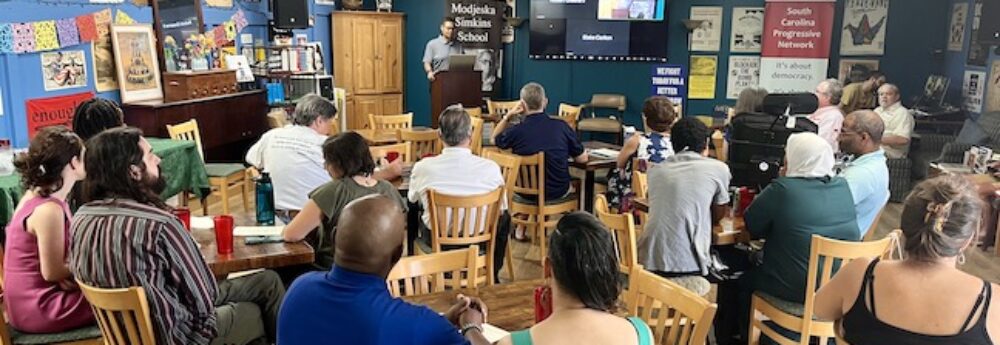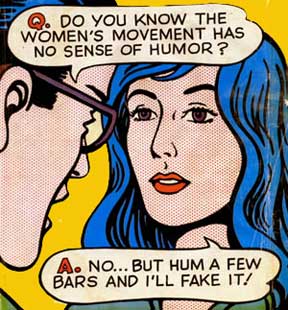Reading Suzanne Levine’s account of her years at Ms., brought back fond memories of my own about the magazine that changed my life. My sister had a subscription in high school, and I became an avid reader of Ms. in 7th grade. It educated and inspired me, and started me on the path of political activism.
In college, I spent a week in New York City in search of a summer internship. My first stop was at Ms. Although the magazine wasn’t hiring, then-editor Pat Carbine spent a couple of hours with me talking about my aspirations and calling editor friends in the city to see about other job options. Looking back, it moves me that such a powerful woman would take time out of her busy day to help a kid with big dreams and no plan.
I ended up spending my summer in New York at McCall’s magazine. But I will never forget the kindness of the good people at Ms. I congratulate them on helping grow the feminist movement not just here but around the world.
Becci Robbins
********
Ms. Memories
By Suzanne Braun Levine
The Women’s Media Center
It is always stunning to me to realize that an event that still lives in my contemporary memory actually took place decades ago; so when I was invited to a 35th anniversary celebration for Ms. Magazine (yes, it lives! The current publishers are the Feminist Majority Foundation), it was as though my life was flashing before my eyes. I joined the magazine in the summer of 1972 for the very first monthly issue. When we put Wonder Woman on the cover, we felt empowered and protected by her magic bracelets. But I had no idea what a life-changing and world-changing adventure I had signed up for.
At the time I was an only half-awake feminist. But I did have one bond with the magazine. When the Preview Issue came out the previous winter it featured a list of celebrities who admitted that they had had illegal abortions; amended to the article was a coupon for other women to add their names. I filled out the coupon, glad to step forward on an issue that mattered a lot to me. By the time those coupons were being compiled, I was on the job and actually found and opened my envelope.
The women I worked with came from a range of backgrounds – the civil rights movement, the feminist movement, and those like myself who were magazine types and somewhat less activist. I wore a pink silk blouse and matching cashmere skirt to my first day of work – only to discover that my “desk” was a pile of boxes in a small dusty room I shared with three others. It didn’t take long before I – along with many of the readers of Ms. – was becoming radicalized by the injustices toward women that we were encountering at every turn. I was also a little scandalized by some of the more way-out seeming discussions that I found myself editing. Back then, I found the idea of not shaving your legs, for example, almost unthinkable. And “Liberating Masturbation” … Well, you can imagine.
v
The fact that we were even talking about such things in public was exhilarating, and the response to the conversation from women who had felt isolated and crazy and now were feeling empowered was even more exhilarating. That flood of gratitude was intimidating too. After all, who were we to be shaking up people’s lives? Most of us were in our twenties and thirties and had hardly gotten our own lives straightened out. And now women were looking to us for advice. The challenge was not to give advice, but to share the experiences of women in similar situations and enable the reader to make her own choices with the confidence that she had a supportive community to back her up. The modesty of the magazine’s voice, combined with its totally rude and fearless exposition of taboo subjects, created a powerful and unique touchstone for women.
Despite our disclaimers, there were regular calls to our offices from people who had nowhere else to turn for life-changing referrals and advice. It was hard not to try to solve their problems – and we did our best within our pages – but we were not The Women’s Movement. We were not the Pravda of some monolithic party with a you-are-with-us-or-you-are-against-us agenda and a yellow pages of approved resources – though there were those, even within the feminist community, who accused us of trying to be that, and for not being that.
To the extent that we were descriptive of women’s lives rather than prescriptive, we were also very different from the conventional women’s magazines of the time. Most of them had evolved from mail-order catalogues and were still primarily designed to sell the homemaking and beauty products that they wrote about. “Ten ways to … cook a casserole/lose weight/make your baby stop crying …” was the staple coverline. Although Ms. was a pariah in that company and especially to the advertisers of products for women, over time the magazine had an impact on the other women’s magazines, advertising across the board, and on journalism itself. The truth of women’s lives became an acceptable editorial focus, and the power politics of our experience was ultimately, though diffidently, embraced by many of the other women’s magazines.
One of the first to catch on was Sey Chassler, the male editor of Redbook, who, the theory went, got his empathy for women from having a twin sister who was excluded from many of the opportunities that her identical male counterpart was offered. He launched a campaign among the so-called Seven Sisters women’s magazines to educate readers about the Equal Rights Amendment. Another editor who changed the rules was Ruth Whitney at Glamour, who deftly positioned advertiser-friendly fashion and beauty features in the front and tucked articles about abortion, domestic violence, lesbian custody in the back. The very late acceptance of the term “Ms.” by the New York Times in 1986 – after countless meetings, pressure from women within the Times, and demonstrations outside their offices – was the journalistic establishment seal of approval. We took it as begrudging acknowledgment of the fact that they could no longer fight us, so they were reluctantly joining us.
Throughout my 17 years at Ms., there were always those who wanted to take us down individually and as a movement. Although as editor, I was an inside person and my colleagues who dealt with the public and the advertising community took the most abuse, there would be professional or social circumstances where I would dread having to drop the bomb that I worked at Ms. In almost any group there was at least one man who seemed unable to resist the challenge to Make The Feminist Cry by belittling our work or putting down the experiences that we were claiming in our lives. When those men tired of the sport, though, the women they were with would inch over and quietly exchange confidences.
There ware also women who wanted to take us on. About the way we dressed. About our lack of gratitude for all we had been allowed to achieve. About our bad manners. About how were making things worse for them not better. About how we shouldn’t presume to speak for all women.
It seems almost incredible now to consider those criticisms. And it is a measure of the impact of the magazine and the movement that women no longer dress in a uniform, that we don’t feel grateful for what a male-dominated society has given us, that we don’t need to “behave,” that no one can speak for all women but that collectively we have indeed made things better for all women. And certainly for this one woman.

